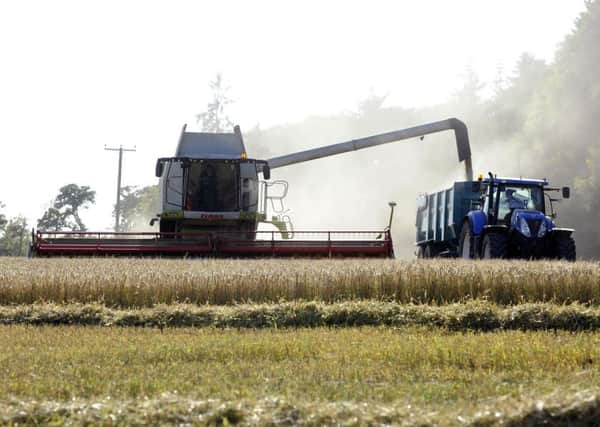Brian Henderson: How can Scotland boost its crop potential?
This article contains affiliate links. We may earn a small commission on items purchased through this article, but that does not affect our editorial judgement.


But while the crops gathered across the country have been performing much better than the slow-to-germinate plants – which seemed to struggle to emerge this year – might have led us to predict, the stop-start harvest in our own area gave me time to calculate that they were unlikely to be breaking any records.
• READ MORE: Farming news
During the showers I had time to mentally list the factors which might have limited the crops’ potential, and in so doing found my mind wandering back to the dark ages, when I was a student.
Advertisement
Hide AdAdvertisement
Hide AdWe had a lecturer from a different discipline along to talk to us – and to challenge some of our preconceived notions. I guess it would be the academic equivalent of confronting the agricultural “It’s aye been done that way” outlook.
Working on the assumption that “making two ears of corn or two blades of grass grow where only one had grown before” was a good idea, he challenged us to think how this could be done.
When we gave an answer he encouraged us to go further and, probably before the management phrase was even invented, get us to “think outside the box”.
Obviously, supplying all the nutrients required for crop growth was important – as was reducing the limiting factors which might come into operation to hold a crop back.
When he proposed that crops, including cereals, might be grown under cover, our immediate dismissal of such an idea on the grounds that it would be almost impossible to combine such crops was, he said, nothing more than another issue to be got round.
Admittedly, it would have to be in a theoretical and perfect world – but if we could get rid of the challenges from weeds, pests and diseases, provide plenty of nutrients and ample water, what then would limit our crop outputs?
The amount of solar radiation intercepted – and the efficiency of its use – could be a key factor, as might the levels of CO2 in the atmosphere.
Advertisement
Hide AdAdvertisement
Hide AdThere is certainly plenty of opportunity to improve. While the world record wheat yield was snatched back to New Zealand earlier this year, with 16.791 tonnes to the hectare, over the course of harvesting the 16 ha filed, the yield monitor had been indicating 20t/ha in some parts.
I believe the theoretical yield achievable if all the sunlight was efficiently harvested is considerably higher even than this.
In recent times advances in LED technology can now offer previously unimagined controls and variations in light wavelengths and levels. Additionally, the chemistry of photosynthesis could be significantly improved in many of our staple crops.
If wheat and other crops could be altered to be able to make use of the far more efficient energy capturing process – utilised to great effect by so-called C4 crops such as maize and sorghum – a further boost in yield could be achieved.
We could also be limiting ourselves by growing only one crop a year. As recent research has shown, under carefully controlled conditions, up to six crops of barley a year can be grown.
While this might never be commercially viable, the ability to multiply up seedstocks of new varieties in such “speed breeding” facilities – with a 60 day turn round on barley crops – could be hugely improved.
Another limitation might also be confining crops to fields. The use of stacked “vertical farms” could offer benefits in terms of better accommodation, along with the use of otherwise sterile space.
Advertisement
Hide AdAdvertisement
Hide AdSeveral of these ideas are being drawn together at the James Hutton Research Institute – where sealed units with control over temperature, nutrients and light levels which, due to their modular design, can be used anywhere in the world, are being developed.
It only goes to show that sometimes it might pay to think inside the box as well.